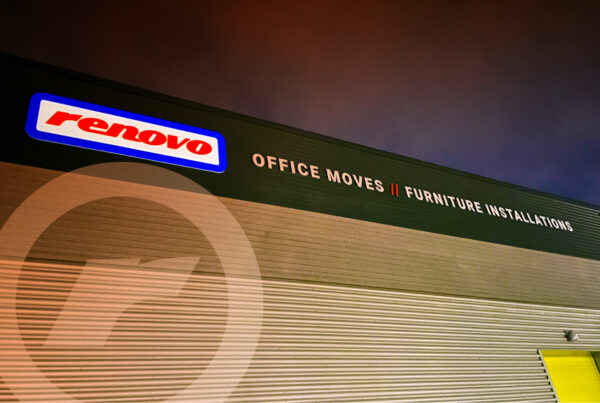
Business Relocation -Things to Consider
Office relocation is a very stressful and time-consuming event. Given that companies move on average every 7 years, it means that those given the responsibility of managing the move may well be doing it for the first time. We have outlined some of the key tasks to help with the process in order to achieve a successful project to a reasonable budget and time scale.
Step 1: Planning your Office Relocation
Decide on a realistic deadline when you would like to move. This will need to coincide with lease agreements and fit out schedules for the new space. Key company deadlines should also be considered, such as end of year finances and company projects that need to be delivered. The impact of these deliverables to staff and dictate when key departments move.
It is vital that the move itself has a minimum impact to normal business activities, and there is little downtime.
A reputable office relocation company will be able to advise on the best approach and share their experiences on move timescales, costs, and methodologies free of charge.
It is important to consider the new space, and how it will be managed at the earliest time. This may be an opportunity to create a new environment for the staff, and the company to introduce agile workplaces. With this in mind, spaces should be planned and designed, an inventory of what furniture and equipment can be used in the new space. Enough time should be factored in to go through a furniture procurement and ordering process if needed.
Step 2: Budget – How much does Business Relocation Cost?
Costs involved when relocating offices can mount up quickly. A number of elements need to be considered and provided for in the budget plan. Additional costs can be incurred due to delays and issues. Sticking to a cost plan can be very challenging, and there are a number of elements that can be easily overlooked when budget setting. A few of these include;
● Re-instatement / Dilapidations of your old offices prior to handing it back to your landlord.
● Relocation of specialist equipment by specialist vendors. This can include printers, photocopiers (MFDs), safes and any other leased equipment.
● Access constraints for vehicles and timings. It is worth checking with the building managers to understand if there restrictions on out of hours working due to local residents.
● Check if there are other activities in your new building when you are relocating your business. This could be other tenants moving, tests or maintenance works taking place. It is also important to check for local road closures or events which could impact on access or timings.
It is advisable to speak with a commercial relocation company at this stage in your plans as they will be able to look at project costs whilst also advising on these elements.
Step 3: Nominate a Move Champion
Your office relocation is going to be complicated and each department within the business will have different challenges and priorities that need to be overcome and considered. It is vital that a single point of contact be put in place to co-ordinate all activities. They in turn should put together a team of representatives from the business departments so all things can be considered during the planning and implementation. If the business has a facilities and IT department, they will need to be heavily involved in the project for a successful completion.
A reputable office relocation company should also be able to offer a moves project management resource to support this as required.
Step 4: Office Design and Fit Out
It is likely that you will want to make alterations to your new space prior to moving in. This could be a substantial refurbishment or minor decoration works. Either way, you will need to find an office fit-out company that will provide a professional service, whilst committing to realistic timelines, and delivering a high standard of finish. All this needs to comply with your budget.
If you can put together a brief with a clear idea of your needs, your interiors company can then take control of the concept and design of your new space. This will help reduce your workload, but maintain full communication and updates on progress for you.
Maximising your new space will be key to a successful project. You may well be able to introduce new ways of working for your staff, by offering agile work spaces such as hot desking, team tables, collaboration spaces and quiet pods.
Space planning the offices will help with this, and various options can be looked at.
Step 5: Communication
Letting your staff know what to expect with the office relocation will ensure your people remain well informed, more in control, and less stressed about the whole process. It will help create a level of excitement about the move and how the new space will work for them.
Consider putting together a regular newsletter to provide information to staff and updates on program and progress. Ensure also that there is a means for staff to ask questions about the move and provide feedback.
Customers and suppliers will also need to know about your impending move and planned moving dates. This can be done in a number of ways;
● Distribute flyers or change of address cards with customer receipts and invoices, and supplier purchase orders.
● Send out an email campaign.
● Update your website.
● Add information to your staff email signatures.
● Social media posts.
● Ensure to update the addresses on your Google listing, office stationery, email footers and website.
Step 6: IT Relocation
The relocation of the IT systems can be one of the most complex and important part of the move. Each member of staff and department will have particular specifications and requirements that will need to be replicated at the new desk positions.
There may also need to be a change in what is provided to support new ways of working, where staff can be more flexible in where and how they work.
If new equipment is being provided, ensure to allow for roll out and installation resources and costs. Also make allowances for legacy equipment as this will need to be recycled under the WEEE directive.
A reputable office relocation company will be able to provide resources and expertise around all work streams required to relocate your IT including roll-out of new equipment, disconnect and reconnect, server relocation, and equipment audits. They will also be able to advise on the recycling of old equipment.
These are some of the main considerations for planning and implementing a forthcoming office move.
If you need any help with your office relocation please contact Danny Rutter on 07553 265 461 or email us info@renovo-services.com



 Quality Assured
Quality Assured Health and Safety
Health and Safety

